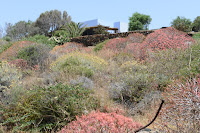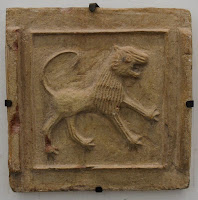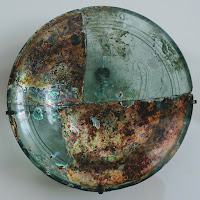 |
| MdR - the obvious allure |
Finally our 2018 sailing season has started with our departure from Marina di Ragusa on Sunday. After months of being tied up there is always the slight hesitation as to whether everything will work as it should. As most of us are blessed with a fair dose of OCD, we tend to triple check things and then invent another list to re-check. Suffice it to say, if something doesn't work by the time you leave, you have very bad luck.
My last minute headache that I discovered quite by chance was the autopilot hydraulic pump that stopped working. It characteristically sits in a position best visited by 2 ft high engineers with #13 sockets and a hook wrench. Since, outside of French boatyards (this is a French boat), these are in short supply, I was forced to improvise with the aid of much blue air and the suspension of my claustrophobia. Luckily the, again French, manufacturer of said hydraulic cylinder was able to send me a new set of seals almost quicker than you can say 140 Euros. I fear that this new found-skill of rebuilding hydraulic linear drives will have a somewhat limited application, nevertheless it is worth the one-off effort when balanced against the prospect of hand steering for 27 hours to Tunisia in the sometimes rough Sicilian channel. This was my final task before I got into the realms of inventing things and upon Catherine's return from some work, and a slight pause to have a birthday meal with friends, we set off, I a year older, west for a gentle day sail to be sure, to be sure that all was well.
 |
| Chiesa del Carmine - Sciacca |
We anchored outside Licata once again and agreed that our sea-legs must have improved somewhat as the rolling in a moderate swell had no discernable negative effect upon morale. The water is still a touch chilly, but clean and clear enough for me to dive to see that below the water-line all quite free of fouling and even the anode was relatively intact. Ian of Linea persuaded me to buy a galvanic isolator which I installed last year and has saved me the enormous cost of a 4 Euro anode. I jest of course, as the extent of the saving is more like the difference between the propeller staying a 3 blade one and not becoming a 2 blade version. This may sound a bit dramatic, but certain retail habits require special justification.
We had had in mind to sail to Mazara del Vallo early the next morning, but along the way, after 9 hours of heavy swell and a 30 knot wind, we decided that, the cobwebs sufficiently cleared, we would stop in Sciacca instead; foregoing another 5 hours of being battered about. The mooring up in Nautico Corallo was relatively painless despite the very heavy cross wind. The Ormeggiatore was super helpful and we managed to tie up with no dented egos or scratched gel-coat. I must have been digesting Giorgio of Amalfi's boat handling skills all winter.
 |
| Bentivegna - 1 of 20,000 |
|
 |
| Ceramic lined streets |
|
 |
| Awaiting a tourist |
|
After we cleared our heads of the wind we headed up to the town which is at the top of 200 steps, or so they say. One is greeted by an expansive piazza overlooking the port and surrounded by a combination of typical Sicilian Baroque and some younger less illustrious architecture with cobbled streets going further up a steep hill. We soon found, what turned out to be an excellent Pizzeria, very aptly named Bellavista and enjoyed a lovely meal served by a very friendly and attentive waiter. I had an inkling that we would stay here for more time than we had planned.
 |
| Castello Incantato - Sciacca |
In the morning, the wind had abated and the sun returned with a vengeance. The heat made for a welcome change and we headed back up the steps for a gelato. Our next stop was a hat stop as I thought a panama hat would be a suitable accoutrement to try again after the previous one I bought on Naxos was swept away hours after having bought it. We stepped into a vignette of Sicilian life as we crossed the threshold of this milliner's store. The hat purchase out of the way, we got talking to the father and daughter owners and covered subjects as far ranging as the occupation of Sicily by the Bourbonnes to the benefits of Durum wheat in the bread of the south. It struck us that there is an eloquence here that illustrates a knowledge of the historical as well as contemporary context of Sicily beyond what we are used to experiencing at home. I am still a relative bystander in these conversations as my Italian progresses to marginally beyond the 'negotiate a mooring with the Ormeggiatore' level, nevertheless I am glad that I understand a lot more now and am not tempted to try and switch into English. It is an important journey in the road to acceptance here albeit that dialect has a strong presence and is quite unfathomable.
This encounter left us feeling that Sicily is a series of short stories that one seems to walk into. Our next one was, perhaps somewhat predictably, in a wine shop. It was already nearly 1pm and, what looked like a well stocked wine boutique was about to close. He said he would stay open for a few minutes while we looked around though and we scoured the shelves for familiar and new labels. He happened to have a particular red that we enjoy very much but that we seldom find. We said we might stop by later in the afternoon as we didn't feel like carrying bottles in the heat down to the port. He said, 'oh, you're in a boat... are you at Lega Navale or Corallo?'. 'Corallo', I said. 'Well I have a boat there too, I will bring the wine to you this evening'. You fish then, I guessed. Yes! and out came the phone with pictures of his prize catches, the last one being a 90kg Swordfish just about as big as him. The importance of his lunch hour receded as we discussed the state of the sea between Sciacca and Tunisia and where the Tuna are to be found since the Swordfish population has dwindled. Again a short story encounter. Someone who, on the face of it, is a wine shop proprietor, but whose passion is clearly fishing, his motor boat and getting on the water.
 |
| More heads |
Our next excursion was to an open air museum a short ride away. While at the bus stop a spritely octogenarian started talking to me asking where I was from. It was a ruse of course, as he had no real intention of remembering. He had worked in the textile industry in Arnhem in the Netherlands for many years and was able to compress his life's story into the 12 minute bus wait. I figured out that he had a 180 second memory as every three minutes he asked
'Di dove sei?' followed by the obligatory reference to a northern language joke
'Warum Banane krumm?'. The arrival of the number 4 bus brought the encounter to a tidy close and we headed towards Castello Incantato the home of one of Sciacca's famous and eccentric sons, Filippo Bentivegna. I like sculpture as much as the next guy, but his feat of having carved 20,000 heads during his lifetime seemed to the lay person a triumph of quantity over quality. A bit hard to copy though, so he gets gold in the originality department.
We left Sciacca full of impressions, mostly pleasant but also with a touch of melancholy for the slightly run-down nature of it all. The dearth of tourists though is also a blessing and perhaps the balance is just right.
 |
| Panama and Fiat |
|
 |
| Lago di Venere |
|
 |
| Hippies in town again |
|
Our next stop was Pantelleria, a small volcanic island 65 nautical miles SW and a short sail from the East coast of Tunisia. Despite being June already, the harbour was relatively empty and we were able to tie up without any problem...or charge. We hired a car for a couple of days and explored this rocky, yet verdant place. Its proximity to Africa and the Maghreb is palpable and the Dammusi (houses) with their characteristic dry stone walls and whitewashed dome roofs give it an other worldly feel.
 |
| Scauri on Pantelleria - Wonderful food, but dodgy mooring |
There is a disproportionate number of good restaurants here it seems and we mostly ate out savouring some really good
Rascasse with our neighbours on the quay. There are thermal springs that flow into the sea and we enjoyed the incongruous sensation of 40 degree celcius pools a few feet away from what is still a chilly sea. Another sight is the Lago di Venere, a very shallow thermal lake with temperatures rising to above 50 degrees in places. It would not be like me not to mention that the local desert wine from the
Zibibbo grape,
Passito, is particularly delectable and a number of well-known wineries such as Pellegrino and the picturesque Donnafugata have a significant presence here.
 |
| Donnafugata Winery |
|
 |
| Architecture that divides opinion |
|
 |
| Flora for volcanoes |
|
With an eye on an approaching weather pattern, our plan was to head next to a convenient port in Tunisia. Coincidentally a yacht from Sidi Boussaid - just near Tunis, was moored up almost next to us and we got chatting to the crew who said they could arrange a berth in what is otherwise a very busy marina. This is just next to the historical site of Carthage and seemed like the ideal place to be. While it is not very far, probably 14 - 16 hours sail, finding a weather window is more of a challenge with the Sicilian channel throwing up all sorts of obstacles. We decided upon an overnight Wednesday to Thursday and busied ourselves with some boat preparation tasks while we waited for the wind to change direction. The next post, and I had not thought I would say this, will be from Africa...
a presto!


















































